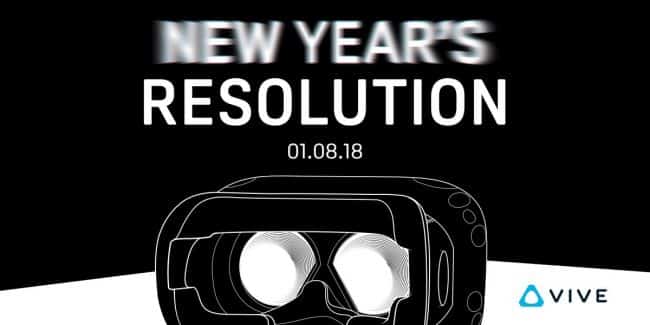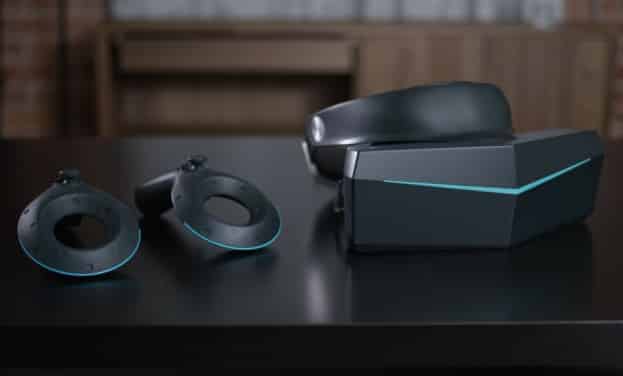All signs point to a new HTC Vive VR headset (HMD) at CES 2018 next week, along with a host of other virtual and augmented reality devices. While rumors have swirled for some time that HTC is working on a new HMD, all we’ve seen was the Vive Focus. That was recently released in China in a move where HTC seemed to turn its back on the American market. But not so fast.
What triggered the rumors for CES was a simple tweet with words both in and out of focus – indicating – duh! – a higher resolution headset.

The tech press is swooning over the possibility of a new HTC Vive VR headset with 4K resolution, which would be a major upgrade. Right now, the Vive offers 1080×1200 per eye which gives you a screen resolution of 2160×1200.
From PC Gamer,
The significance of a 4K per eye headset from HTC would be two-fold. First, high resolution displays are now the biggest drivers for increased performance in GPUs. Both AMD and Nvidia know this, and having a big player like HTC push spec requirements forward will only mean good things for gamers. As monitor manufacturers start pushing 4K and 8K displays, you get a recipe for speedy GPUs.
As PC Gamer notes, 4K resolution per eye resolves the screen-door effect we find on our current headsets. VR experiences become truly life-like.
While that would be an impressive upgrade, there’s a caveat here (as PC Gamer also notes). The majority of the marketplace just doesn’t have the computing power to run a 4K HMD. There’s a market, to be sure, but it’s just not that big.
In our workshops, we’re running both the HTC Vive and the Dell Mixed Reality headset on Core i7 laptops with Nvidia 1060 graphics cards. They do fine, but we know we’re pushing the limits of what these machines can do. 1070’s would be better, but they cost significantly more.
The other challenge here is that the high-end VR market already has a player in it – the upcoming Pimax 8K headset project on Kickstarter. It’s raised millions and is highly popular in the gaming community.
And even there, the challenge remains – the Pimax demands some serious computing power.

Our bet for the new HTC Vive VR headset
Given HTC’s growing commitment to virtual reality but the need to produce a marketable product, we expect to see a slight bump up in the resolution to 1440 per eye. In place of full 4K, we’ll see either a new design or a wider field of view (FOV). If Pimax proved one thing on an HMD that they’ve yet to send down the production line, a wider FOV makes a huge difference.
As we and others noted, once you try the Pimax HMD demo, using Vive and Rift is like looking through a pair of binoculars. FOV can be a game-changer, and a little easier to do with our current desktops and laptops.
The new HTC Vive VR headset will undoubtedly push virtual reality forward another step. But it also reveals the challenge of working in a rapidly advancing field. You make major investments in hardware only to watch it go quickly out of date. It’s tough for individual purchases; all the more challenging on an institutional level.
But it’s a price we pay to stay current – to be innovative, to help shape a revolution in media instead of being washed up on the shore after the wave has receded.
We’ll be closely following the developments at CES 2018 – stay with us as there’s much more to come next week.
Emory Craig is a writer, speaker, and consultant specializing in virtual reality (VR) and generative AI. With a rich background in art, new media, and higher education, he is a sought-after speaker at international conferences. Emory shares unique insights on innovation and collaborates with universities, nonprofits, businesses, and international organizations to develop transformative initiatives in XR, GenAI, and digital ethics. Passionate about harnessing the potential of cutting-edge technologies, he explores the ethical ramifications of blending the real with the virtual, sparking meaningful conversations about the future of human experience in an increasingly interconnected world.

